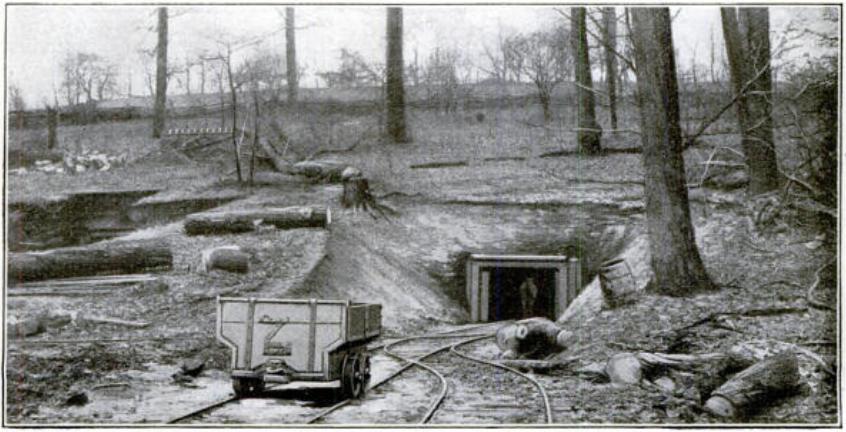Back in July, a team from Q-Track Corporation traveled to Bruceton, PA, just outside Pittsburgh, to conduct RF propagation and performance tests on a Near-Field Electromagnetic Ranging (NFER®) Real-Time Location System (RTLS) optimized for use in a mine environment. The visit inspired this post about the history of the Bruceton Research Center.
The Experimental Mine in Bruceton, PA began operations in 1910 according to the Wikipedia stub article. Popular Mechanics featured an article on the mine in 1911. [1] The aim of the Experimental Mine was originally to provide a test bed for improving mine safety, particularly as relates to safe use of explosives in coal mines. An initial test in 1911 was witnessed by President Taft and other dignitaries. [2]

By the 1920’s however, additional research was underway to explore how radio technology might be applied for mine communications and to direct rescuers in in mine emergencies. [3] Popular Science provided a comprehensive overview of research in a 1927 article. [4]
Many of the most recent technical reports – some of which describe modern work in the Experimental Mine, are available from the Mine Safety and Health Administration website. A much more detailed history is available from the CDC.
[1] “Coal Mine for Testing Explosions” Popular Mechanics, July 1911, p. 29-30.
[2] R. Dawson Hall, “The Explosion at Bruceton Mine,” Coal Age, November 11, 1911, pp. 149-152.
[3] G.E. Mitchell “Radio May Direct Rescuers in Mine Emergencies” The Wireless Age, January 1923, p. 55-56.
[4] M.E. Clements “Uncle Sam’s Toy Coal Mine,” Popular Science July 1927.
